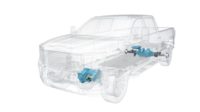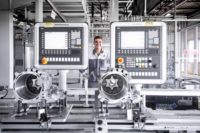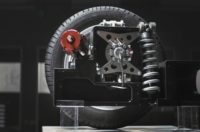PARIS—Lego bricks have inspired all sorts of innovative ideas over the years. Recently, the popular toy helped a French automotive engineer create an EV power train.
Nicolas Fremau, a hybrid architecture expert at Groupe Renault, used Lego parts to make a physical model that he first imagined on paper.
"When I saw my son playing with Lego Technic sprockets at home, I said to myself ‘well, it's not so far from what I'd like to do.’ So, I bought what I needed piece by piece to have all the assembly elements," says Fremau.
“I had the idea of doing this first to help me understand what to do,” explains Fremau. “After about 20 hours of ‘work’ under the slightly surprised eye of my son, the model was born."
However, this wasn’t a case of just fitting bricks together. Fremau had to assemble different axes and transmission rings, glue them and drill them to fit into a cradle, and then motorize the whole system. It was a piece of engineering that allowed him to live-test the different modes of operation between the engines.
The process of trialing the possible modes of operation also allowed Fremau to discover new ones that he hadn’t previously thought of in theoretical analysis. This strengthened his conviction that he was on the right track with this prototype.
After finishing his creation, Fremau consulted with his colleagues to see if the Lego model could work in the real world.
“Going from the Lego adventure to reality was a massive challenge,” says Ahmed Ketfi-Cherif, a mechatronics synthesis architect at Renault. “The dog clutch was the focus of [our] attention.”
According to Ketfi-Cherif, this part replaces both a sprocket and a synchronizing ring in a clutchless system. “The dog clutch is a gearbox that has a very good efficiency thanks to the reduction of parts rubbing against each other inside,” he explains. “This technology is used in motorsport, where its lack of smoothness is not detrimental. On the other hand, on production models, it is necessary to offer smooth gear changes or else customers will be driven away.
"We're used to using dog clutches in Formula 1 for a racing engine,” explains Ketfi-Cherif. “But, it was something completely new for a ‘general public’ engine.”
The idea, quickly validated by Ketfi-Cherif, was to add a second electric motor to the Renault E-TECH hybrid system.
"Its role is to replace the synchronizers of a traditional gearbox to facilitate the clutch and therefore the gear change,” says Ketfi-Cherif. “By working in conjunction with the electric traction motor, it allows very precise regulation of the speed of rotation of the gearbox for smooth gear changes."
The engineers updated the Lego model, then started bench and road tests. This allowed them to observe that this second electric motor, named HSG (high-voltage starter generator), brings other benefits to the system. For instance, its immediate torque contribution smoothes acceleration at low speeds to avoid any sensation of torque breakage at the time of gear changes.
At low speeds, it allows the system to operate as a ‘series hybrid for greater comfort and flexibility. Without the need for a lot of stored energy, it enables the battery capacity to be reduced and the charging socket to be removed.



